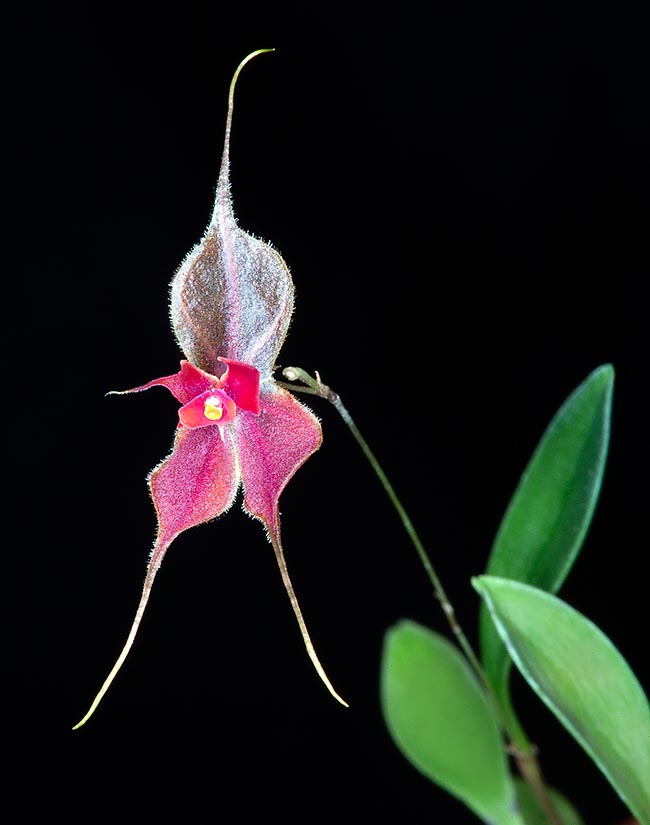Family : Orchidaceae

Text © Pietro Puccio

English translation by Mario Beltramini
The species is native to Costa Rica where it grows in the mountain pluvial forest at around 2600 m of altitude.
The etymology of the generic name has not been specified by the author, after some it is the combination of the Greek substantives “λεπίς” (lepis) = scale and “άνθος” (anthos) = flower, with reference to the shape of the flower of many species. Others think it is coming from “λέπος” (lepos) = bark, and “άνθος” (anthos) = flower, seen that the plants of the genus live on the bark of the trees. The specific name is dedicated to its discoverer, the Costa Rican Daniel Matamoros.

Described only in 2011, the Lepanthes matamorosii is a small epiphyte native to the humid pluvial forests of Costa Rica with short rhizome and 3-4 cm erect, thin, stems © Giuseppe Mazza
The Lepanthes matamorosii Pupulin & Bogarín (2011) is an epiphyte species with short rhizome and thin erect stems, 3-4 cm tall, covered by sheaths ending with an ovate-acuminate funnel-shaped expansion with ciliate margin, 2-3 cm long and about 1 cm broad, coriaceous of intense green colour above, suffused with purple below.

The flowers, among the biggest of the genus, have immediately aroused the interest of lovers and collectors © Giuseppe Mazza
Racemose inflorescences, on a 2 cm long peduncle, arcuate, bearing flowers, on a 3-4 mm long pedicel and ovary, opening in succession. Ovate-elliptic dorsal sepal with caudate apex and denticulate margins, about 2 cm long and 0,6 cm broad, united at the base to the lateral sepals per a length of 1-2 mm, semitransparent, of pale yellow colour with purple veins. Lateral ovate-elliptic sepals with caudate apex and denticulate margins, 2-2,3 cm long and about 0,5 cm broad, united at the base per a length of about 3 mm, of purple colour with yellowish margins and appendages. Obtriangular petals with caudate apex, about 6 mm long and 2 mm broad, of purple red colour. Bilaminate labellum, 1-2 mm long and about 3 mm broad, of purple red colour.
It reproduces by seed, in vitro, and by division with each section provided of at least 3-4 stems. Species with flowers among the biggest of the genus that after a few years from its discovery has aroused considerable interest among the lovers and the collectors, requires high luminosity, but not direct sun, intermediate temperatures, constantly high humidity, as not having storage organs, over the 70%, and continuous light ventilation.
It may be mounted on pieces of bark or on rafts of cork or of roots of arborescent ferns, with sphagnum at the base for maintaining the humidity to the roots, or cultivated in small pots with draining compound that can be formed by bark fragments finely sized, charcoal and inert with addition of sphagnum. Regular watering in order to maintain the substratum constantly humid, but without stagnations, that may cause rottenness, daily for the mounted plants, utilizing rainwater, by reverse osmosis or de-mineralized. It’s ideal positioning is an intermediate humid greenhouse or a terrarium where it is possible to adjust properly all the environmental parameters. If in flat, it may be placed behind a window facing east, with humidifier to keep a high humidity or placing the plant on an ample saucer filled up with crushed stone or expanded clay with a layer of water not at direct contact with the bottom of the pot.
The species is inscribed in the appendix II of the CITES (species whose trade is internationally ruled).
